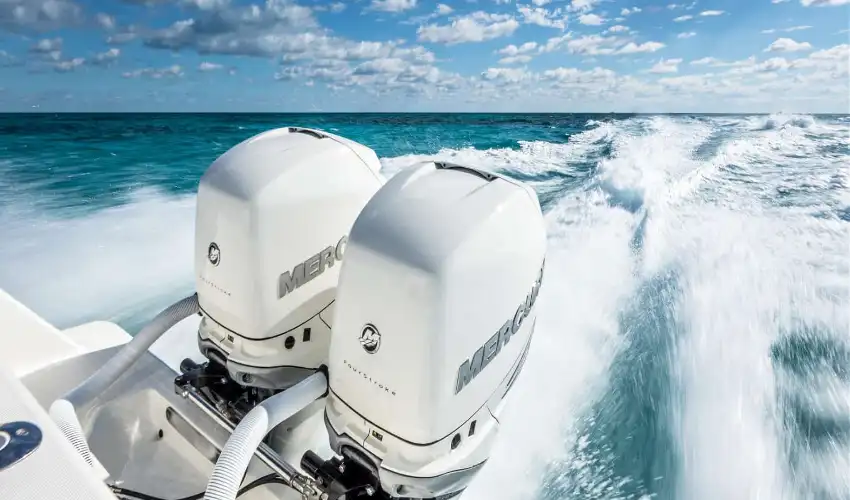
How to Choose the Right Outboard Motor for Your Boat
Choosing the right outboard motor is essential to ensure optimal performance, fuel efficiency, and safety for your boating experience. Whether you’re a seasoned sailor or a first-time boat buyer, understanding what to look for in an outboard motor can save you time, money, and frustration. In this guide, we’ll explore the key factors you should consider when selecting the right outboard motor for your boat.
- Understand the Types of Outboard Motors
There are two primary types of outboard motors: two-stroke and four-stroke.
- Two-stroke motors are lighter and provide faster acceleration. They’re great for smaller boats and situations where weight and speed matter. However, they tend to be less fuel-efficient and noisier.
- Four-stroke motors are heavier but offer smoother operation, better fuel efficiency, and lower emissions. They are ideal for larger boats or those used for long distances.
With advancements in technology, modern two-stroke engines have improved significantly in efficiency and emissions, so your final choice may depend on your specific boating needs.
- Determine the Right Horsepower
The horsepower (HP) of your outboard motors for sale directly affects your boat’s speed and performance. Choosing the right HP depends on several factors including the size, weight, and intended use of your boat.
Check your boat’s capacity plate to find the maximum horsepower rating. Never exceed this limit, as it can be unsafe and may void your boat insurance or warranty. For a balanced choice, aim for a motor that delivers about 70-80% of the boat’s max HP rating for best performance and fuel economy.
- Match the Shaft Length to Your Transom
Outboard motors come with different shaft lengths—typically 15″, 20″, or 25″. It’s crucial to match the shaft length with your boat’s transom height for optimal performance. An incorrectly sized shaft can cause poor handling, increased drag, and reduced efficiency.
- Short shaft (15″): Best for small boats and inflatables.
- Long shaft (20″): Commonly used on most recreational boats.
- Extra-long shaft (25″): Suitable for sailboats and deep V-hull boats.
Always measure your transom before purchasing to ensure compatibility.
- Consider Fuel Type and Efficiency
Most modern outboards run on gasoline, but there are also electric outboard motors becoming increasingly popular for their quiet operation and eco-friendliness.
- For long trips and power, a fuel-efficient four-stroke gas engine is usually preferred.
- For short, quiet outings or small lakes, electric motors are a clean and cost-effective choice.
If you frequently travel long distances or use your boat for fishing or towing, invest in a motor with good fuel efficiency to reduce operating costs.
- Evaluate Manual vs. Electric Start
Some outboard motors come with a manual pull-start, while others have an electric start.
- Manual start motors are typically lighter and cost less, but they require physical effort and can be harder to start in cold weather.
- Electric start motors offer convenience, especially for larger engines, but they require a battery.
If convenience and ease of use are a priority, especially for older boaters or those with physical limitations, opt for an electric start model.
- Think About Tiller vs. Remote Steering
Outboards can be controlled via tiller steering (a handle on the motor) or remote steering (via a steering wheel).
- Tiller steering is simple, more affordable, and ideal for smaller boats.
- Remote steering provides better control and comfort, particularly for larger boats or those with multiple passengers.
Your choice depends on your boat size, typical usage, and comfort preference.
- Check Weight and Portability
The weight of the motor should be compatible with your boat’s design and intended usage. Lightweight motors are easier to transport and install, especially for smaller boats, dinghies, or kayaks.
If you often remove the motor for storage or transport, consider a portable outboard that is compact and easy to carry.
- Assess Brand Reputation and Service Availability
Stick with reputable brands like Yamaha, Mercury, Honda, Suzuki, and Evinrude. These manufacturers offer reliable performance, good warranties, and readily available service centers.
Before buying, ensure that there are local dealers or service technicians who can provide maintenance and parts for your chosen brand.
- Don’t Forget Maintenance Needs
Some outboards require more maintenance than others. Four-stroke engines generally have more parts and may need more regular service, while two-strokes are simpler to maintain but may require more frequent fueling and oil mixing.
Consider your willingness and ability to perform regular maintenance—or find a good marine mechanic who can.
Final Thoughts
Choosing the right outboard motor for your boat involves balancing performance, fuel efficiency, weight, and usability. By considering your boat type, usage, and budget, you can make a smart investment that will enhance your time on the water. Always consult your boat manufacturer’s guidelines and talk to marine experts to find the best fit. With the right outboard motor, your boating adventures will be smoother, safer, and a lot more enjoyable.
